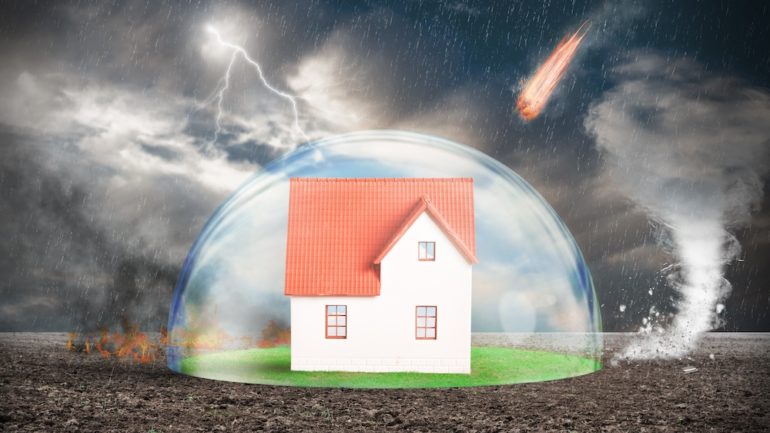A safe room in your home could save your life and those of your loved ones in the event of extreme weather or a natural disaster. What is a safe room, and how can it protect you?
Scenarios to consider
Safe rooms provide maximum protection when tornadoes or hurricanes strike. Because there is usually plenty of advanced warning when a hurricane is coming, it’s best to evacuate if civil authorities advise it. When you can’t or don’t want to evacuate, however, a safe room can protect you and your family as you ride out the storm.
Once outside storm shelters buried in the ground were the safe rooms of their day in tornado-prone regions, but today indoor safe rooms can provide the same protection. Unlike hurricanes, tornadoes can strike suddenly but pass relatively quickly.
In the event of an earthquake or fire, it’s best to leave the house than to rely on a safe room.
Features of a good safe room
Building a safe retreat is best done during the house’s construction. If you’re adding one to an existing home, choose a walk-in closet, a windowless bathroom or any room without windows (or with just a small one). The room should be big enough to accommodate the number of people who will use it.
Here are other important requirements for home safe rooms:
- Your safe space should be on the ground floor or below ground.
- Safe room doors should be made of steel or thick, heavy wood. Doorframes should be constructed with steel or heavy, braced lumber. A strong deadbolt lock is essential.
- Sheetrock on the walls should be replaced with steel plating or even two layers of one-inch thick plywood.
- Safety rooms should have a ventilation shaft to the outdoors.
Supplies and furnishings
Make sure your safe room has the following items:
- If the room has no ventilation shaft, a portable air filtration machine in case you are forced to stay in the room for an extended time. Keep in mind, however, that these machines require electricity, which might not be available in a catastrophe.
- A portable toilet, fresh water, and food supplies.
- A hand-crank-powered radio and lights.
- A portable cell phone charger.
- A good first aid kit and medical supplies.
- Chairs, cots, sleeping bags and pillows to provide comfort for extended stays.
Related – A Checklist: Being Prepared for Home Emergencies


